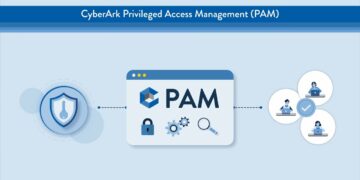Enterprises consider data analytics as a competitive advantage today. Data is essential to know your customer better, design better services and streamline your business processes, so enterprises collect enormous amounts of data across customer touchpoints and internal control systems. However, this data is beneficial for reporting and analytics only if it is high-quality.
High-quality data has the following characteristics:
- Accurate – It does not have any erroneous values.
- Valid – It is correct as per rules specific to your business.
- Complete – It has values for all the fields in each record.
- Consistent – It is comparable across systems.
- Uniform – It uses the same units of measure.
If your data does not meet these requirements, it needs to be cleansed before using it for business intelligence purposes.
What is data cleansing?
Data cleansing determines incomplete and inaccurate data within a dataset and takes corrective action to clean up the data. It includes correcting data formats, deduplicating records, removing or editing incorrect data and handling missing data. The data cleansing process results in high-quality data that can be used in BI and data analytics to generate business insights.
How does data cleansing help make better business decisions?
An average business loses 12% of revenue due to inaccurate data. It is because of a reduction in productivity and missed opportunities due to fragmented customer data. Data cleansing is an absolute must as it provides:
- Error-free business intelligence
Data cleansing ensures that business decisions rely on accurate business intelligence. The latest, corrected figures calibrated to the same systems make their way into the reports, which is essential for large enterprises working across multiple locations with different currencies and measurement standards.
- Better predictive analytics
Predictive analytics help businesses foresee future outcomes based on the patterns generated by mining current data. For example, attrition trends data can help plan recruitment and training to meet the predicted demand for resources. If the attrition data is not accurate or recent, it results in erroneous predictions that lead to incorrect workforce planning. It may result in a loss of revenue or a bad customer experience over time. Data cleansing also entails the removal of outlier data which has little value and can influence predictive algorithms incorrectly.
- 360-degree customer view
Your business collects customer data via multiple channels. De-duplication is required to avoid multiple copies of individual customer records. Customer data also tends to decay over time. For example, your customer may change the residential address or phone number. If this data does not update in the correct record, you will not be able to communicate with your customer regularly. Data cleansing ensures you have an updated 360-degree view of your customer so your customer-facing personnel can interact with your customers confidently by taking accurate decisions in real-time.
- Increased decision productivity
Data cleansing ensures that your team leaders do not waste time back and forth with the IT team due to report errors. Up-to-date reports increase the productivity of strategic meetings and enable quick decision-making. For example, in cases of time-bound marketing campaigns such as festival sales, the management needs to get sales reports that are updated every hour. It enables them to take corrective action as required before the campaign ends. It is only possible with a streamlined and automated data cleansing process.
Data cleansing is required to drive correct business decisions at the right time. However, it is not cost-effective to use in-house data scientists for data cleaning activities. Your data scientists should spend time generating actionable insights that are valuable for your business. Specialised third-party resources can carry out the data cleansing activities more efficiently. If your business deals with voluminous data requiring regular data cleansing, you can outsource it to a company specialising in data cleansing services.
Why outsource data cleansing?
- An outsourcing partner gives you access to skilled data cleansing resources and the latest automation technologies.
- It includes standard quality control measures to ensure the output data set is error-free and compatible with target systems.
- It also ensures a fast turnaround within deadlines because the data cleansing process aligns with service level agreements (SLAs).
- Established companies providing data processing services offer secure methods to transfer data to and from your company servers. Also, they offer non-disclosure and confidentiality agreements.
- Because of economies of scale, outsourcing services provide up to 40% cost savings compared to in-house data cleansing activities.
Along with data cleansing, there is a whole host of related services that outsourcing partners provide, which covers the entire gamut of business intelligence and data analytics. These include data scraping, metadata management, data visualisation and data mining. If the data cleansing results are up to the mark, you can outsource more downstream processes to the same partner. This will streamline your data management and ensure quick turnaround.



































































